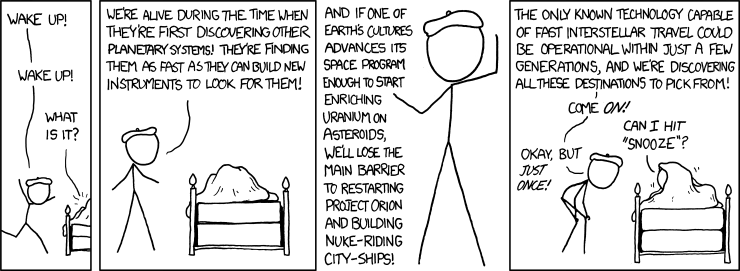Tuesday, April 9, 2013
Transiting Exoplanet Survey Satellite
Last Friday NASA awarded a space science and engineering team lead by MIT $200 million to design, build, launch, and operate a spacecraft designed to better characterize the local population of transiting exoplanets. The mission, known as the Transiting Exoplanet Survey Satellite, or TESS, hasn't yet begun, so Wikipedia's article is a bit terse, but you can still read more about its background and objectives here:
TESS
I missed the announcement (and an update here) because I was travelling that day, but this is wonderful news for the community of people who make a living finding planets across light-years of deep space, as well as those who are just happy that such a community exists. TESS was turned down in an earlier round of Explorer-class mission selections, which must have been a tough call given how much potential there is in this spacecraft. Unlike Kepler, which has spent the last four years staring at a narrow patch of space with no nearby stars, TESS will survey the entire sky with four wide-angle telescopes and 192 megapixels of imaging resolution, uncovering the closest, smallest tansiting exoplanets to Earth in the cosmos. Some of these will probably have life, and some of them may be serious targets for visiting spacecraft toward the end of this century or the next.
Most planets don't transit, since planetary orbits are essentially randomly inclined and only a fraction of a percent of exoplanet orbits cross a clean line of sight between Earth and starlight. There will surely be small, potentially earthlike planets "nearby" (as in tens of light-years distance rather than thousands) that go unnoticed by TESS, but the MIT team will find the close earthlike planets that transit sooner and cheaper than anyone else can. With missions like this in the pipeline, it's no wonder Randall Munroe's beret guy is so excited:
Subscribe to:
Post Comments (Atom)


No comments:
Post a Comment